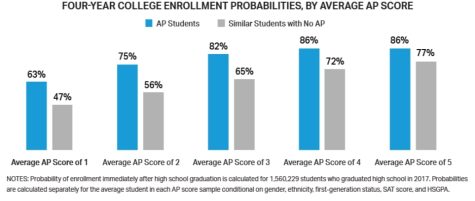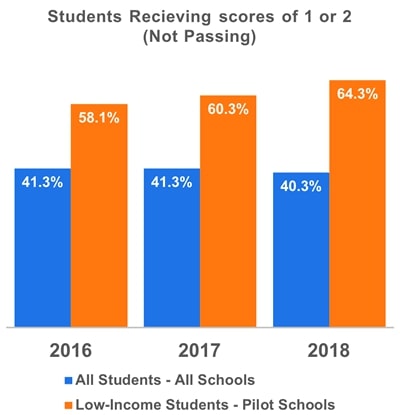
Carson Neuhausen | Sports Editor
October 24, 2024
Online AP testing, introduced by College Board during the COVID-19 pandemic, has become a topic of debate, with both significant advantages and notable drawbacks.
One of the major benefits of online AP testing is accessibility. This flexibility benefits students in rural or remote areas and those with disabilities who may have difficulty reaching traditional test sites. Additionally, the comfort of a familiar environment can reduce anxiety for some students, helping them focus better compared to the high-pressure setting of a large testing room. San Clemente High School student Luke Mudge said that “I think the switch to online is a positive thing. I feel way more comfortable on a computer and I think I can go faster because of that.” Technologically, online testing also allows students immediate access to integrated tools, making the exam-taking process more convenient for those who don’t have expensive graphing calculators.

However, online testing is not without its challenges. Technology issues are one of the most significant concerns, as many students encounter internet connection failures, device crashes, or trouble uploading their answers. These technical problems can disrupt the exam and lead to unnecessary stress or even lost test scores. Another challenge is the different testing capabilities for students. While some have expensive computers, others may be forced to use outdated, slow tech that could leave students at a disadvantage. Junior Doran Farrell mentioned that “I have to use my super old and slow school Chromebook. Last year I knew someone who got to use a MacBook and they were able to finish faster because they weren’t lagging like I was.”
Equity is another major issue. Not all students have equal access to the technology required for online testing. Students from lower-income areas may lack reliable internet or updated devices. While some efforts have been made to address this issue, such as providing tech support, the digital divide remains a serious concern.
Controversially, some believe that the switch to online is purely a cash grab by the College Board. The largest cost to the company is paper. The millions of tests that need to be printed, the thousands of tests lost, and the act processing and developing the tests all require paper. This paper cost ends up eating away at their margins. The College Board did not lower the cost to take the test after the online switch, meaning that their margins have increased substantially. They may be using the cover of “equity” as an excuse to bolster their profits.
With students forced to rely on good test scores to get into college, it is vital that College Board takes the students opinion about the new tests. The students who prefer paper over online may have to suffer due to what could be labeled as “greed.”

Leave a Reply